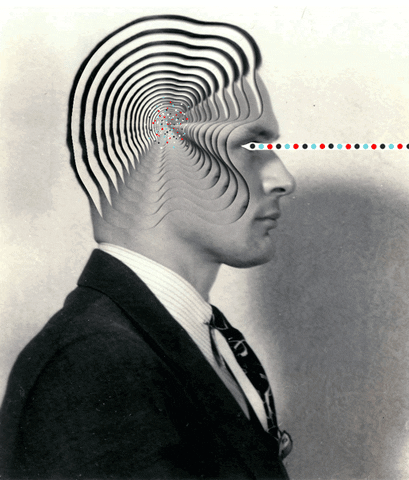As design permeates our everyday lives, it’s not surprising that misconceptions about this field amass.
As someone who transitioned from graphic design to UX/UI design, I’ve noticed various misunderstandings about design that can create roadblocks in projects and hinder effective communication.
In this blog post, I’ll tackle three of the most persistent misconceptions and share insights to help clarify the true essence of design.
Misconception #1: Everyone Is Capable of Design

One common myth is that everyone is capable of design, simply because we all make aesthetic judgments in our day-to-day lives. While it’s true that most of us have our own tastes and preferences, there’s a vast difference between knowing what you like and truly understanding the complex process of design.
In other words: you wouldn’t assume you’re a skilled software developer just because you use apps or software daily, right? Similarly, it’s a stretch to believe that everyone possesses the necessary skills to be a designer. Design goes beyond personal preferences; it’s about understanding why certain elements appeal to diverse audiences and creating experiences tailored to their needs.
Consider the example of designing a restaurant menu. A well-designed menu isn’t just about making it visually appealing or organizing dishes in a way that makes sense to you. It’s about understanding the target audience, their dietary preferences, and even the way they read and process information. A skilled designer would conduct research, gather data (by asking the guests), and analyze user behavior to create a menu that is not only visually appealing but also easy to navigate and understand for the restaurant’s patrons.
BM Insight: BrightMarbles has recently joined forces with the Padrino delivery service to launch a brand-new mobile app and dramatically the local delivery market. Read more about the entire app development and business process in the interview with our engineers and Padrino owners.
Real design involves a deep dive into research, observation, and empathizing with users to develop a user-centered experience. It’s not just about choosing visuals that resonate with you; it’s about crafting a concept that addresses users’ needs and desires, based on solid evidence.
In summary, while everyone may have an opinion on design, not everyone has the expertise or skillset to truly understand the intricacies of design and create effective, user-centered solutions. Remember, just because you can mix and match your wardrobe doesn’t mean you’re ready to design the next groundbreaking app. Dispelling this myth allows us to appreciate the work of professional designers and acknowledge the importance of their role in crafting meaningful experiences.
BM Insight: Today, design comes in different form(at)s. For instance, videography is one of the new branches of design, as the offspring of film and design. And even though videographers have incredible equipment at disposal, it’s not only shooting and editing that make visually appealing videos. Our in-house video artist Goran Breberina specifies what makes a successful videographer in his article Through the Lens: Skills that Make a Good Videographer.
Misconception #2: Design Is Merely Aesthetics

Another pervasive misconception is that design is all about how something looks. But like an iceberg, there’s so much more beneath the surface! A well-designed experience goes beyond visual appeal, identifying what users want in a thoughtful, empathetic manner, whether it’s an online or offline physical journey.
A well-designed experience can leave a lasting impression on users and showcase the power of intentional, user-centered design.
Let me share my contrasting experiences with public transportation systems in Belgrade and Prague.
In Prague, the public transportation system is a shining example of thoughtful design. The efficient network of trams, buses, and metro lines is well-integrated, making it easy for users to switch between different modes of transport. Clear signage, user-friendly ticketing machines, and well-planned stations create a seamless and stress-free experience for both locals and tourists.
On the other hand, navigating the public transportation system in Belgrade is a more challenging experience. Although the city offers various means of transportation, including buses, trams, and trolleybuses, the lack of clear signage and user-friendly information makes it somewhat difficult for newcomers to find their way around. Additionally, the aging infrastructure and limited integration between different transport options can further complicate the user experience.
The contrast between these two experiences highlights the significant impact that well-executed design has on a user’s overall experience. By focusing on practical functionality, rather than just aesthetics, we can create experiences that cater to users’ needs and desires, making their interactions with products and services more enjoyable and efficient.
Misconception #3: UX Design Can Thrive on Assumptions

Relying on assumptions and preconceived notions about users’ needs is a slippery slope in UX design. Being deeply entrenched in a project can create a false sense of understanding and lead to suboptimal designs, or worse, no design at all.
Let’s consider the example of designing a mobile app for a local library. If the app’s creators were to rely solely on their assumptions about what users want or need, they might focus primarily on aesthetics, such as color schemes and fonts, while overlooking other crucial aspects.
However, without conducting user research and understanding the needs of various user groups – such as students, researchers, or casual readers – the app might fail to address essential functionality, like an easy-to-use book search or a streamlined reservation process. The result could be a visually appealing app that falls short in providing a satisfactory user experience.
Designers are, in essence, problem solvers. Our job is to empathize with users, and the only way to do that is to observe them and understand their struggles in various contexts. Design should be rooted in research and user insights, not assumptions or personal biases.
By recognizing and avoiding the trap of relying on assumptions, UX designers can create more effective designs that recognize the genuine pain points of their target audience. The result will be greater user satisfaction and overall success for the project.
BM Insight: Contemporary UI/UX designers live in the golden age of applied visuals. They can quickly collect and process valuable data to narrow down the features that users need, only to use cutting-edge software tools and turn them into practical solutions. Our UI/UX maverick Marko Vladušić has written recently about the relationship of motion design and UI/UX. Read his article Fluid Magic: How Motion Design Breathes Life into UI/UX Design on the BrightMarbles blog.
Conclusion: Clearing the Fog of Design Misconceptions
To truly appreciate the depth and complexity of design, we must look beyond superficial thinking and focus on the experiences we’re creating. Dispelling these common misconceptions allows us to concentrate on crafting more meaningful, user-centered designs that genuinely enhance people’s lives.
As the field of design continues to evolve, it’s our responsibility to challenge conventional wisdom and promote a deeper understanding of design principles.
By shifting the conversation and embracing design as a vital problem-solving discipline, we can contribute to a world filled with better-designed experiences that cater to diverse user needs – one where train stations feel like luxurious resorts, restaurant menus are as easy to navigate as your favorite book, and apps don’t leave you questioning your life choices.
